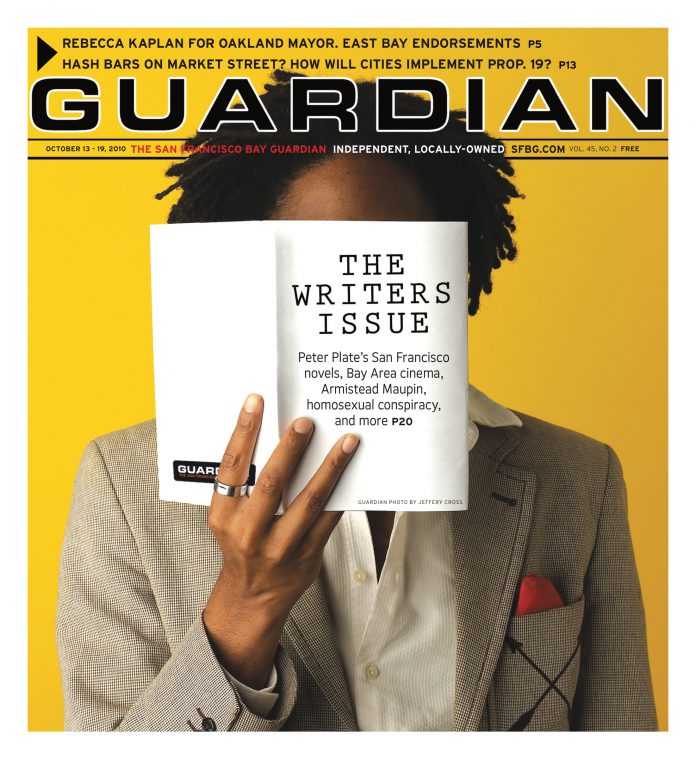arts@sfbg.com
DANCE Quite a few hula companies populate the Bay Area, but none is led by a kumu hula (teacher) quite as charismatic as Patrick Makuakane. Watch him warm up an audience, and you’d think he could charm cash out of a bunch of IRS agents. Then he steps on stage, grabs a drum, and starts to chant, and you know that this is an old soul, somehow still in touch with hula’s roots as a spiritual practice. “We love that duality about him,” explains Makani da Silva Santos, one of his longtime dancers.
Makuakane’s choreography for his Na Lei Hulu I Ka Wekiu company, which celebrates its 25th anniversary this year, reflects his complex personality. He is as much at ease creating hulas based on pop songs as he is at excavating meaning out of ancient chants or creating politically searing dance dramas.
Hula, like many other dance forms—Indian, Balinese, West African—was born in rituals that both strengthened a group’s identity and attempted to get in touch with the Divine. In Hawaii, that meant paying tribute to natural forces, particularly the goddess Pele. But missionaries who colonized Hawaii in the 19th century and tried to force Christianity on its people prohibited hula. They considered all Hawaiian culture crude and lascivious. They almost succeeded when King David Kalakaua restored hula and other native customs, saying famously: “Hula is the language of the heart and therefore the heartbeat of the Hawaiian people.” Even so, long after the king’s death, hula had to be practiced in secret. Makuakane’s stark 1999 The Natives are Restless unsparingly looks at that sorry part of Hawaiian history. In one haunting passage, a “priest” tattoos a cross onto bare-chested women.
You can’t miss hula’s deep connection to the earth. Often the dancers wear garlands, head-dresses, and anklets made from flowers and plants. Watching the dancers sway, step, and turn in unison, bent knees opening and closing, feet firmly planted on the ground, you can sense that they are engaged in something that goes beyond simple entertainment, even when dressed in modern garb.
That doesn’t mean hula isn’t also great fun to do and to watch — Don Ho was not all that wrong. Makuakane once told an interviewer that he wanted two things for his dancers: to have fun and to develop a sense of community. Watching her mother in Makuakane’s classes at the age of eight, da Silva Santos first experienced that sense of belonging, When Makuakane asked her whether she wanted to dance, it made her feel special to be invited into this group of grownups. (There were no children’s classes at the time). Twenty-five years later, she is still at it and hopes that one day her daughter “will also dance hula because it’s a link to my Hawaiian culture.”
In addition to dancing with the company for many years, da Silva Santos has undergone the Uniki process, an extensive formal training in Olapa (master dancer) and Ho’opa’a (master chanter) which, as she explains, demands a “disciplined frame of mind” to study the “deeper meanings of the ancient chants and practices”. Does she speak Hawaiian? “I am learning,” the Vallejo resident says. Even after all these years she — in the company of other dancers — still makes her own leis. They no longer have to fashion the skirts themselves. “Fortunately, we now have seamstresses,” she laughs. “Though I do sometimes miss those long nights working together.”
Along with works from the repertoire, Na Lei Hulu will premiere Ke Kumulipo, based on the epic Hawaiian chant of creation. If past celebrations are any indication, you can expect to see many of the students who take hula classes every week for the sheer fun of it — as well as the more than 40 professional dancers.
25 YEARS OF HULA: A SPECIAL ANNIVERSARY PERFORMANCE
Sat/16 through Oct. 24
Palace of Fine Arts Theatre
3301 Lyon, SF
(415) 392-4400

